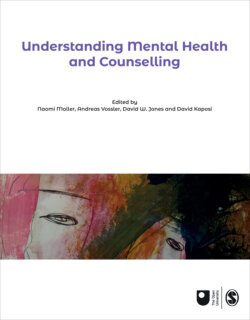Читать книгу Understanding Mental Health and Counselling - Группа авторов - Страница 59
На сайте Литреса книга снята с продажи.
5.2 Medicalisation and the expansion of the therapeutic realm
ОглавлениеOne of the repeated criticisms of the DSM has been that it has led to an increasing medicalisation of problems in living. As noted in Section 1, medicalisation, in its broadest sense, occurs when phenomena are viewed through a medical lens. However, the term is also used by researchers in a narrower way, to refer to how problems in living not previously approached in a medical manner can be treated as if they were illnesses. There are a number of ways in which this can happen in psychiatric diagnostic manuals such as the DSM:
The use of overly broad categories: If diagnostic categories are overly broad and use definitions that leave lots of room for subjective judgement, then some clinicians may apply a given diagnosis more than other clinicians. For example, the broad categories in DSM-I and DSM-II led to the problems found in the US–UK study of schizophrenia diagnosis, as discussed in Section 2.1.
Ignoring normal rates in the general population: In order to decide whether an experience is abnormal, manual developers should survey the general population, since many of us experience mild forms of symptoms which often resolve themselves. For example, in the past, delusions (false and unusual beliefs) have been considered a clear indication of schizophrenia; however, they are much more common in the general population than previously thought. A study of 7000 people in the Netherlands found that 12 per cent had delusions but significant problems were experienced in only 3.3 per cent of these cases (van Os et al., 2000).
Reduced thresholds: If the duration, intensity or number of symptoms required for a diagnosis is reduced, then more people will be diagnosed with that disorder. Prior to DSM-5, for example, clinicians were prevented from diagnosing major depressive disorder if the person had recently been bereaved, because of the risk of pathologising a normal grief response. DSM-5 removed this exclusion, raising concerns that rates of both diagnosis and antidepressant prescriptions would increase.
‘Disease mongering’: This occurs when new disorders are proposed for experiences that had not previously been considered a mental health problem. For instance, DSM-IV introduced ‘premenstrual dysphoric disorder’ (PMDD) as an example of a ‘depressive disorder not otherwise specified’. This referred to ‘markedly depressed mood’, ‘marked anxiety’, ‘marked affective lability’, and ‘decreased interest in usual activities’ associated with a woman’s menstrual cycle (APA, 1994, p. 350). In DSM-5, PMDD is a formal subcategory of depressive disorders. Several researchers and activists have argued that the category pathologises a common experience for many women (Ebeling, 2011). Moreover, it means that women may be inappropriately given antidepressant medication, with all its concomitant side effects.
Recent decades have seen substantial rises in the rates of certain diagnoses, such as attentional deficit hyperactivity disorder and depression, along with the prescription of associated medications such as Ritalin and antidepressants, respectively. There are lots of factors which appear to drive medicalisation: mental health awareness campaigns; the media; government policies (e.g. moves to offer medication and other treatments for mild problems as a preventative measure); advocacy groups campaigning for problems to be seen as illnesses; changing social norms; and the desire of the public for a technical fix to problems in living. Pharmaceutical companies are a key influence and, in their adverts to consumers in the US, they often include checklists of symptoms (mirroring DSM criteria) and recommendations to visit a doctor for assessment if a person experiences those symptoms (Ebeling, 2011).
Since medication is a common treatment for many psychiatric diagnoses, any changes in diagnostic manuals have the potential to increase or decrease the market for pharmaceutical companies’ products. Ebeling (2011, p. 827) discusses the way in which the pharmaceutical company which produced the antidepressant Prozac ‘heavily influenced the codification of PMDD as a disease state’ by funding research in this area by a psychiatrist member of the DSM-IV PMDD work group. It relabelled the antidepressant Prozac as ‘Sarafem’ and sold it as a specific treatment for PMDD (Ebeling, 2011). Chapter 17 will discuss the controversial influence of the pharmaceutical industry on research into the effectiveness of antidepressants.
